About ten days a year, Metrorail operates on a holiday schedule. On some holidays, most commuters have the day off, like Christmas, Labor Day, or Independence Day. But other days can be holidays for some, but not others – like Columbus Day, Veterans Day, or Martin Luther King, Jr. Birthday – and these often fall on a Monday or Friday to make a long weekend. Federal workers, whom we estimate at over a third of peak ridership, usually get these days off, as do others. Metro often uses some holidays to do trackwork. So what happens to rail ridership on holidays?
To answer this question, this post examines total ridership on holidays over the past few years, by holiday, and by time of day. I excluded Christmas, New Year’s Day, and Independence Day, since these holidays are strongly influenced by how they fall in the calendar, and by the events on the National Mall on Independence Day.
Here’s a look at ridership on the remaining 7 holiday weekdays. For the sake of comparison, I also show an average weekday, Saturday, and Sunday for May 2012.
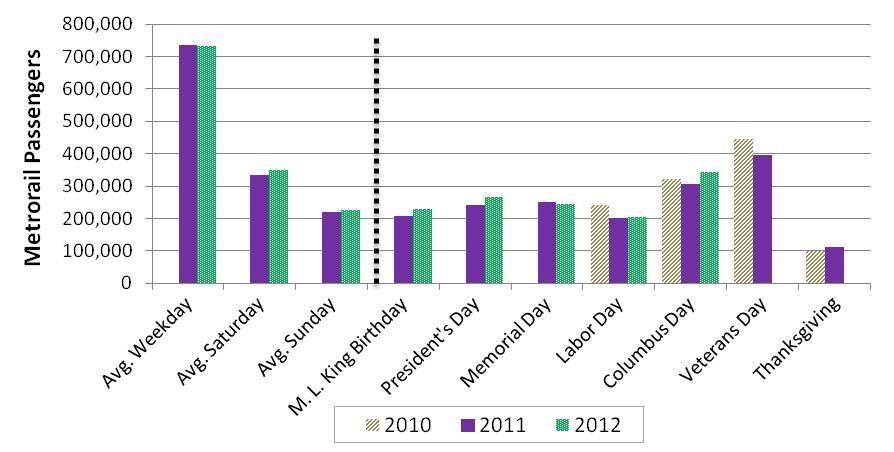
Historical Metrorail ridership on holidays, compared to average May weekday, Saturday, and Sunday
So, all holidays shown have much lower ridership than a typical weekday, and are more in the range of a Saturday or Sunday. A typical weekday on Metrorail shows around 730,000 riders per day, with Saturdays about half that, and Sundays around a third of a weekday. The holidays shown above are in the range of 200,000 to 400,000 riders per day.
Read more…
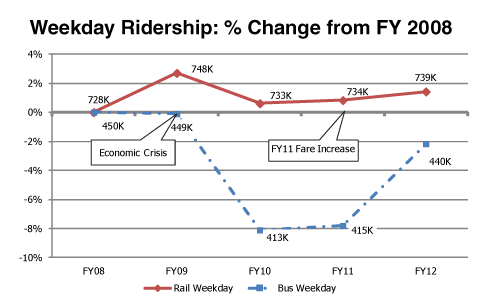 A recent analysis of 5 years worth of ridership data has shown the impacts of the economic downturn and subsequent recovery on Metrorail and Metrobus ridership. Metrorail ridership experienced a 2% drop in ridership in FY10 and then recovery in FY11 and FY12, 1% below FY09 levels. Metrobus ridership experienced an 8% drop in FY10 and began recovery in earnest in FY12, returning to just over 1% above FY08 levels.
A recent analysis of 5 years worth of ridership data has shown the impacts of the economic downturn and subsequent recovery on Metrorail and Metrobus ridership. Metrorail ridership experienced a 2% drop in ridership in FY10 and then recovery in FY11 and FY12, 1% below FY09 levels. Metrobus ridership experienced an 8% drop in FY10 and began recovery in earnest in FY12, returning to just over 1% above FY08 levels.

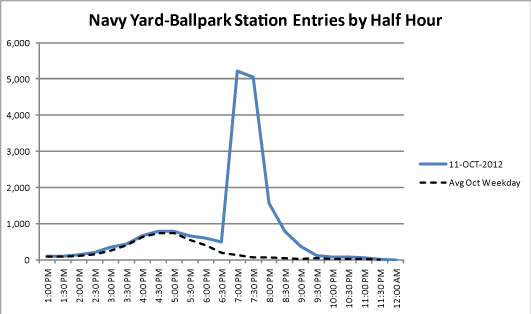
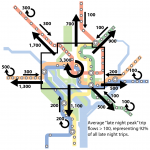
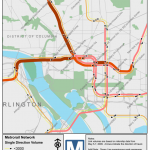
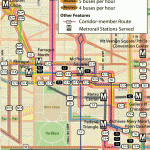
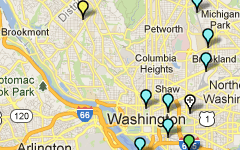
Recent Comments